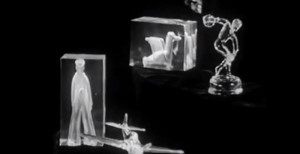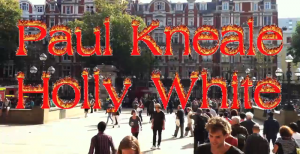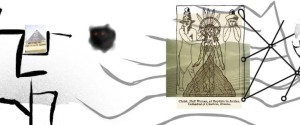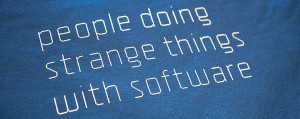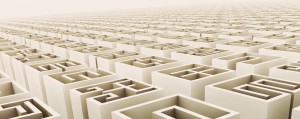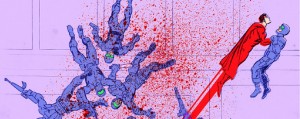Inhabiting the online and offline realms at Berlin’s Future Gallery, Jennifer in Paradise by Dutch artist Constant Dullaart is a reference to the first ever PhotoShop-ped image. A woman lying on a white beach, she has her back to the camera, black hair waving in the wind, the sky, aqua blue. The photo is of one of the ubiquitous software creator John Knoll’s girlfriend, taken and edited by him and his co-creators and points to the alteration and ultimate deformation of its subject across ‘realities’.
The online component of the exhibition, website untitledinternet.com, sees Dullaart modifying an online interface, its start page a familiar Google search engine. All the usual options are there and it works in the same way that Google does, except that the perspective has been changed. An embed of the original page is obscured by images of Dullart’s work; a brush tool erasing random areas, paint swirls obscuring the screen. Information and context is lost.
In the gallery, a large window at its entrance is complete with a YouTube play button. It’s a throwback to some of his earlier YouTube as a Subject series, inspired by the unmerited triumph of the poorly designed video hosting site over all others, its banality entering the material domain in his 2011 performance of its familiar loading circle at the Netherlands’ GOGBOT festival. Sat on the floor, eight white circles surround Dullaart, which he moves repetitively, generating a ring in endless rotation performed and then projected on a wall in the same space.
That motif continues inside, where a wall is dotted with the same ubiquitous loading sequence. Elsewhere, printed float glass work, a light-green, shimmering and transparent material, is printed with various screenshots from untitledinternet.com. Floor-standing and hanging from the walls of Future Gallery, they resemble the countless screens that surround us in our daily lives. Looking out from windows at home and in to them through screens on our devices, we use both for collecting information. That information is filtered in one way or another, as thick glass screen shots display images and text the same way a webpage does. What content we see depends on where we stand, what search engine we’re looking at and how that perspective is monitored and obscured by personal algorithms, marketing strategies and governmental regulation, among other interests.
Here, like in in earlier work, Dullaart is editing online forms of representation, materializing the immaterial, making visible the normally invisible. He does this in a clear, minimalistic, and easily approachable way. Placing himself on a high level among artists working with a post-internet focus, Jennifer in Paradise interrogates notions of reality, its visibility and its ultimate (mis)representation. **
Constant Dullaart’s Jennifer in Paradise is on at Future Gallery, September 12- October 5, 2013.

